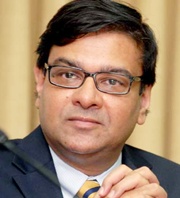RBI keeps repo rate unchanged at 6.25% for a third time
06 Apr 2017
 The Reserve Bank of India (RBI) has kept its policy repo rate unchanged at 6.25 per cent for a third time as it continues to fight a possible rise in inflationary pressures.
The Reserve Bank of India (RBI) has kept its policy repo rate unchanged at 6.25 per cent for a third time as it continues to fight a possible rise in inflationary pressures.
The RBI also announced a 25 basis point hike in the reverse repo rate to 6.00 per cent, narrowing the gap between the repo and the reverse repo.
The Monetary Policy Committee (MPC) of the Reserve Bank of India at its meeting today decided to keep the policy repo rate under the liquidity adjustment facility (LAF) unchanged at 6.25 per cent, RBI stated in a release.
Consequent upon the narrowing of the LAF corridor, the reverse repo rate under the LAF now stands at 6.0 per cent, and the marginal standing facility (MSF) rate and the Bank Rate at 6.50 per cent.
This has been done on the basis of an assessment of the current and evolving macroeconomic situation, RBI stated in its release.
RBI is in the process of withdrawing some of the big pile of cash that has accumulated in the banking system since last year.
The MPC's vote was 6-0, just like the previous meetings, as the panel continues to exhibit a united front in its objective of keeping inflation at around 4 per cent, with elbow room of 2 percentage points at either side.
RBI said the decision of the MPC was consistent with a neutral stance of monetary policy in consonance with the objective of achieving the medium-term target for consumer price index (CPI) inflation of 4 per cent within a band of +/- 2 per cent, while supporting growth.
The RBI, which unexpectedly changed its policy stance to "neutral" from "accommodative" at its last review in February, reasserted its concerns about inflation. This comes in spite of calls for the RBI to do more to aid an economy growing at less than the 8 percent needed to create full employment.
"The MPC remains committed to bringing headline inflation closer to 4.0 per cent on a durable basis and in a calibrated manner," the RBI said in a statement.
"Accordingly, inflation developments have to be closely and continuously monitored, with food price pressures kept in check so that inflation expectations can be re-anchored."
The MPC noted that the Central Statistics Office's (CSO) second advance estimates for 2016-17, released on 28 February has placed India's real GVA growth at 6.7 per cent for the year, down from 7 per cent in the first advance estimates released on 6 January.
Agriculture expanded robustly year-on-year after two consecutive years of sub-one per cent growth. In the industrial sector, there was a significant loss of momentum across all categories, barring electricity generation.
The services sector also slowed, pulled down by trade, hotels, transport and communication as well as financial, real estate and professional services. Public administration, defence and other services cushioned this slowdown. To some extent, government expenditure made up for weakness in private consumption and capital formation.
''Several indicators are pointing to a modest improvement in the macroeconomic outlook. Foodgrains production has touched an all-time high of 272 million tonnes, with record production of rice, wheat and pulses. The record production of wheat should boost procurement operations and economise on imports, which had recently surged. Rice stocks, which had depleted to close to the minimum buffer norm, have picked up with kharif procurement. The bumper production of pulses has helped in building up to the intended buffer stock (ie, 2 million tonnes) and this will keep the price of pulses under check – the domestic price of pulses has already fallen below the minimum support price (MSP).
Industrial output, measured by the index of industrial production (IIP), recovered in January from a contraction in the previous month, helped by a broad-based turnaround in manufacturing as well as mining and quarrying.
Capital goods production improved appreciably, although this largely reflected the waning of unfavourable base effects. Consumer non-durables continued, however, to contract for the second successive month in spite of supportive base effects. Thus, investment and rural consumption demand remain muted.
The output of core industries moderated in February due to slowdown in production of all the components except coal.
The manufacturing purchasing managers' index (PMI) remained in expansion mode in February and rose to a five month high in March on the back of growth of new orders and output.
The benchmark 10-year bond yield rose 5 basis points to 6.74 per cent after the MPC decision, but the rupee strengthened to 64.84 from around 64.94 after the RBI kept rates on hold. The broader NSE share index erased an earlier loss of 0.3 per cent.
The consumer inflation rate climbed to 3.65 per cent in February from a year earlier, picking up from its lowest levels in at least five years.






















